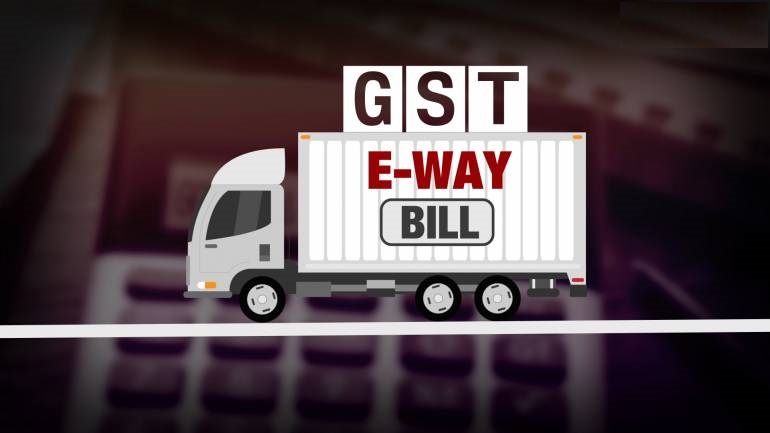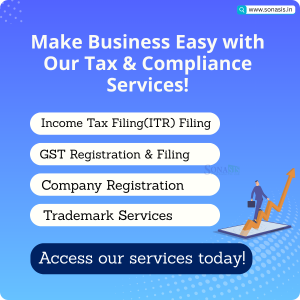
What is an E-Way Bill
E-Way Bill is the short form of Electronic Way Bill. It is a unique document/bill, which is electronically generated for the specific consignment/movement of goods from one place to another, either inter-state or intra-state and of value more than INR 50,000, required under the current GST regime.
As per the update on 23rd Mar 2018, Generation of the e-Way Bill has been made compulsory from 1st April 2018. Inter-state implementation of e-way bill is notified to be implemented from 1st April 2018.
The implementation of Eway Bill to kick-off from 15th April 2018 in a phased manner. States to be divided into 4 lots to execute this phased rollout.
When e-Way Bill is generated, a unique e-Way Bill Number (EBN) is made available to the supplier, recipient and the transporter.
The e-Way Bill replaces the Way Bill, which was a physical document and existed during the VAT regime for the movement of goods.
Who should generate an e-Way Bill
Let’s try to understand who needs to generate an e-way bill during transportation.
GST Registered Person:
(a) When a registered person causes the movement of goods/ consignment, either in the capacity of a consignee (i.e., buyer) or consignor (i.e., seller) in his/her vehicle or hired vehicle or railways or by air or by ship, then either the registered person or the recipient should generate the e-Way Bill in Form GST EWB 01 electronically on the common portal by furnishing information in Part B.
(b) When a registered person causes the movement of goods and hands these over to the transporter for transportation by road, but the e-Way Bill has not been generated, then it is the transporter who needs to generate the bill. The registered person will first furnish the information relating to the transporter in Part B of Form GST EWB. After which, the transporter will generate the e-Way Bill by the information furnished by the registered person through Part A of Form GST EQB 01.
Unregistered Person:
(a) When an unregistered person causes the movement of goods, through his/her conveyance or hired conveyance or using the services of a transporter, then the e-Way Bill needs to be generated either by the unregistered person or by the transporter, by completing Form GST EWB-01.
(b) When an unregistered person supplies the goods to a registered person AND the registered person is known to the unregistered person at the time of the start of the movement of goods, then it will be considered that the registered person is moving the consignment. In this case, the registered person or transporter shall complete the formalities of the e-Way Bill.
When Should E-Way Bill Be Issued
Ideally, e-Way Bill should be generated before the commencement of movement of goods above the value of INR 50,000 (either individual invoice or consolidated invoice of multiple consignments). The movement of goods will be either about a supply/ reasons other than supply (like return)/ inward supply from an unregistered person.
For purposes of an e-Way Bill, supply is considered either a payment in the course of business/ a payment which may not be in the course of business/ no consideration of payment (in the case of barter/ exchange).
Latest update as on 23rd Mar 2018:
The transporters need not generate the Eway bill (as Form EWB-01 or EWB-02) where all the consignments in the conveyance :
Individually (single Document**) is less than or equal to Rs 50,000 BUT
In Aggregate (all documents** put together) exceeds Rs 50,000.
(**Document means Tax Invoice/Delivery challan/Bill of supply)
GST E-Way Bill Format
The E-Way Bill format in GST comprises of 2 parts – Part A and Part B.
The Part A of E-Way Bill in Form EWB 01 aims to collect the details of consignment, usually the invoice details. Accordingly, the following details need to be captured.
GSTIN of Recipient: Mention the GSTIN number of the recipient.
Place of Delivery: Here you must mention the Pin Code of the place where goods are delivered.
Invoice or Challan Number: Mention the Invoice or Challan number against which the goods are supplied.
Value of Goods: Mention the consignment value of goods.
HSN Code:Enter the HSN code of goods which are transported. If your turnover is up to INR 5 crores, you need to mention the first 2 digits of HSN code. If it is more than INR 5 crores, 4 digits of HSN code are required.
Reason for Transportation: The reason for transportation is pre-defined and you need to select the most appropriate option from the list.
Transport Document Number: This indicates either one of the Goods Receipt Number, Railway Receipt Number, Airway Bill Number or Bill of Lading Number.
In Part B of Form EWB 01, the vehicle number in which goods are transported needs to be mentioned. This will be filed by the transporter in the common portal.
E-way Bill FAQs
1.When is the E-Way Bill applicable?
It is applicable for any consignment value exceeding INR 50,000. Even in case of inward supply of goods from unregistered person, E-Way Bill is applicable.
When should the E-Way Bill be generated?
The E-Way Bill needs to be generated before the commencement of movement of goods
2.What is the validity of E-Way Bill?
Less than 100 KM: 1 Day
Every 100 Km or part thereof thereafter – 1 additional day
The validity period will be counted from the time of generation of the E-Way Bill. The validity period of the E-Way Bill may be extended by the commissioner for certain categories of goods,
3.How to generate the E-Way Bill?
Form GST EWB-01 is an E-Way Bill form. It contains Part A, where the details of the goods are furnished, and Part B contains vehicle number.
Can E-Way Bill be generated for consignments of value less than INR 50,000?
Yes, either a registered person or a transporter can generate an E-Way Bill although it may not be mandatory.
4.What happens if multiple consignments are transported in one vehicle?
The transporter should generate a consolidated E-Way Bill in the Form GST EWB 02 and separately indicate the serial number of E-Way Bill for each of the consignment.
On generation of E-Way Bill, will there be any reference number generated?
Upon generation of the E-Way Bill, on the common portal, a unique E-Way Bill number called ‘EBN’ will be made available to the supplier, the recipient and the transporter.
5.What happens if goods are transferred from one vehicle to another vehicle in the course of transit?
Before transferring the goods to another vehicle and making any further movement of such goods, the transporter needs to update the details of conveyance in the E-Way Bill on the common portal in Form GST EWB 01.
Note: If goods are transported for a distance of less than ten kilometres within the State or Union territory from the place of business of the transporter finally to the place of business of the consignee, updating the details of conveyance in the E-Way Bill is not mandatory.
6.What happens if E-Way Bill is generated but goods are not transported?
The E-Way Bill can be cancelled electronically on the common portal within 24 hours of its generation. The E-Way Bill cannot be cancelled if it has been verified by an officer during transit.
7.What happens if recipient of goods does not communicate the acceptance of rejection within 72 hours?
If the recipient of goods doesn’t communicate acceptance or rejection within 72 hours, it will be deemed as accepted by the recipient.
8.How to generate the E-Way Bill?
Form GST EWB-01 is an E-Way Bill form. It contains Part A, where the details of the goods are furnished, and Part B contains vehicle number.
Can E-Way Bill be generated for consignments of value less than INR 50,000?
Yes, either a registered person or a transporter can generate an E-Way Bill although it may not be mandatory.
9.Is there a facility to generate or cancel the E-Way Bill through SMS?
The facility of generation and cancellation of E-Way Bill will be made available through SMS.
10.What happens if there is a mistake or wrong entry in the e-way bill?
If there is any incorrect information or a mistake in the e-way bill, then it cannot be corrected or edited. In case of any errors in the e-way bill, the only option is to cancel the e-way bill and generate a new e-way bill with correct details.
11.What must be done if the validity of the e-way bill expires due to vehicle breakdown or other circumstances?
The validity of the e-way bill can be extended under circumstance of exceptional nature, law and order issue, trans-shipment delay, accident of conveyance etc by updating the reason for extension and the details in Part B of Form GST EWB-01.

